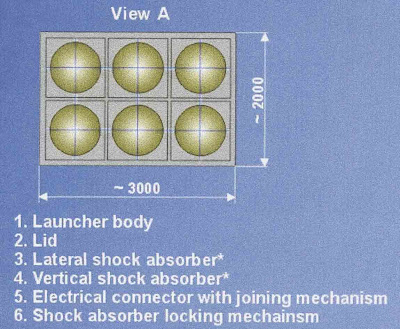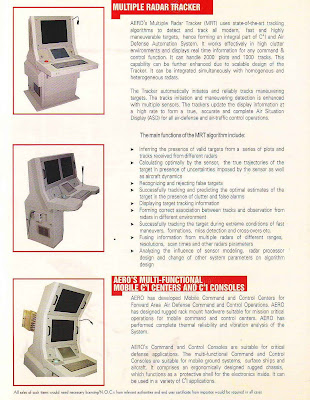
Tuesday, July 28, 2009
Monday, July 27, 2009
Friday, July 24, 2009
Sunday, July 19, 2009
Thursday, July 16, 2009
Wednesday, July 15, 2009
V-22 Osprey For IAF & Indian Navy?








Notwithstanding the efforts of the Indian Air Force (IAF) to acquire fixed-wing and rotary-winged transportation aircraft for medium- and heavy-lift operations, the Indian Navy is determined to acquire its own seaborne integral air transportation assets for the Indian Army's projected combat aviation brigade, and its 91 Infantry Brigade, which is now being reconfigured as an amphibious brigade. For enabling both these brigades to undertake all-weather expeditionary campaigns via vertical envelopment (as part of joint services power projection operations) the Indian Navy has reportedly begun seriously evaluating the performance of the Bell-Boeing V-22 Osprey ‘tilt-rotor’ aircraft, so called because it takes off with its twin wingtip-mounted rotors set vertically like a helicopter and glides in the air with them thrust forward as on a fixed-wing aircraft. The shift requires only a pull of the lever by the pilot. The Navy is apparently convinced that in terms of weight, cargo, distance or speed (it can travel twice as fast and three times farther than any existing medium-lift utility helicopter) the once derided Osprey has finally emerged as the vital game-changing force multiplier when employed for effecting maritime/amphibious manoeuvres from the sea, as well as for high-altitude, all-weather air assault, aerial logistics and casualty evacuation over mountainous terrain of the type prevalent along India’s northern and northeastern borders (this also explains the IAF's new-found interest in the Osprey). Being able to cruise at altitudes of 25,000 feet allows the Osprey you to clear obstacles that today’s helicopters like the CH-47F Chinook or AW-101 or Mi-26T cannot even negotiate. Though such helicopters can airlift things, and probably more than the Osprey can, they still cannot arrive at their landing/drop zones from altitude. Nor can they do the transit times and ranges. Furthermore, while existing medium-/heavy-lift helicopters typically require between 24 and 40 man-hours of maintenance for every hour in the air, the Osprey requires only about 9.5 man-hours of maintenance for every hour of flight, and consequently its direct operating costs too are drastically reduced.
The V-22 is best employed as a vertical takeoff-cum-landing platform capable of rapidly deploying air assault and special operations forces to any theatre of operation over both land and sea. This will facilitate the timely build-up of combat forces while minimising the demands of sealift and airlift assets for expeditionary force projection campaigns. While the US Marine Corps is using its MV-22Bs to perform combat assault and combat support missions, the US Air Force’s Special Operations Command’s CV-22s have been configured for terrain-following, low-level, high-speed flight in a variety of special operations missions. The US Navy’s MV-22s will perform combat support missions. Boeing Rotorcraft Systems is responsible for the fuselage and all subsystems, digital avionics, and fly-by-wire flight-control systems. Boeing’s industrial partner Bell Helicopter Textron is responsible for the wing, transmissions, empennage, rotor systems and engine installation. The Osprey is presently being series-produced in three customer-specific versions--50 CV-22s are in delivery to the US Air Force, 360 MV-22Bs to the US Marine Corps and 48 V-22s to the US Navy. Although the Osprey’s per unit cost is estimated at US$100 million, no less than 15 countries (India included) are seriously considering its acquisition in the near future. The Indian Navy is believed to require about 40 Ospreys over a 10-year period (including about six platforms configured for AEW & C operations). Each such tilt-rotor aircraft can carry 24 fully-equipped combat troops, or up to 20,000 pounds of internal cargo or 15,000 pounds of external cargo, at twice the speed of a helicopter. The Osprey also features cross-coupled transmissions so that either engine can power the rotors if one engine fails. The rotors can fold and the wing rotates so the aircraft can be stored on board an aircraft carrier or LPD/LHD. It also has a fixed aerial refuelling boom for being refuelled in mid-air by aircraft like the Lockheed Martin-built C-130J-30 Super Hercules, six of which are on order for the IAF. The Osprey comes powered by twin Rolls-Royce AE1107C turboshaft engines each rated at 6,150shp, has a service ceiling of 25,000 feet (7,620 metres), and has an unrefuelled mission radius with 24 troops of 390nm (722km).--Prasun K. Sengupta
Subscribe to:
Posts (Atom)











































